Mercedes EQB vs Tesla Model 3 – Which one offers the better deal?
Everyday use, family trips or long-distance drives – here’s where the differences show.
Discover whether Mercedes EQB or Tesla Model 3 fits your lifestyle better.
Costs and Efficiency:
Looking at overall running costs, both models reveal some interesting differences in everyday economy.
Tesla Model 3 has a clearly perceptible advantage in terms of price – it starts at 34300 £, while the Mercedes EQB costs 45900 £. That’s a price difference of around 11592 £.
In terms of energy consumption, the advantage goes to the Tesla Model 3: with 13.20 kWh per 100 km, it’s a bit more efficient than the Mercedes EQB with 15.20 kWh. That’s a difference of about 2 kWh.
As for range, the Tesla Model 3 performs distinct better – achieving up to 702 km, about 167 km more than the Mercedes EQB.
Engine and Performance:
Power, torque and acceleration are the classic benchmarks for car enthusiasts – and here, some clear differences start to show.
When it comes to engine power, the Tesla Model 3 has a distinct edge – offering 460 HP compared to 292 HP. That’s roughly 168 HP more horsepower.
In acceleration from 0 to 100 km/h, the Tesla Model 3 is clearly quicker – completing the sprint in 3.10 s, while the Mercedes EQB takes 6.20 s. That’s about 3.10 s faster.
In terms of top speed, the Tesla Model 3 performs clearly perceptible better – reaching 262 km/h, while the Mercedes EQB tops out at 160 km/h. The difference is around 102 km/h.
There’s also a difference in torque: Tesla Model 3 pulls clearly perceptible stronger with 660 Nm compared to 520 Nm. That’s about 140 Nm difference.
Space and Everyday Use:
Whether family car or daily driver – which one offers more room, flexibility and comfort?
Both vehicles offer seating for 5 people.
In curb weight, Tesla Model 3 is somewhat lighter – 1822 kg compared to 2105 kg. The difference is around 283 kg.
In terms of boot space, the Tesla Model 3 offers to a small extent more room – 594 L compared to 495 L. That’s a difference of about 99 L.
When it comes to payload, Mercedes EQB clearly perceptible takes the win – 435 kg compared to 333 kg. That’s a difference of about 102 kg.
Who wins the race?
The Tesla Model 3 proves to be outperforms in nearly all aspects and therefore becomes our DriveDuel Champion!
Tesla Model 3 is the better all-rounder in this comparison.

Tesla Model 3
Mercedes EQB
The Mercedes-Benz EQB is an all-electric compact SUV that seamlessly blends practicality with modern luxury. Its sleek design and spacious interior make it an attractive option for families seeking both style and function. With advanced technology and impressive range capabilities, the EQB is a testament to Mercedes-Benz's commitment to sustainable mobility.
details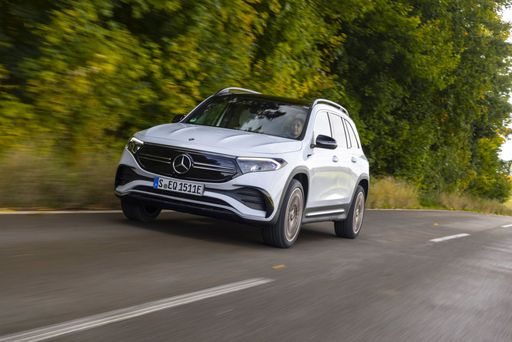 @ group-media.mercedes-benz.com
@ group-media.mercedes-benz.com
 @ group-media.mercedes-benz.com
@ group-media.mercedes-benz.com
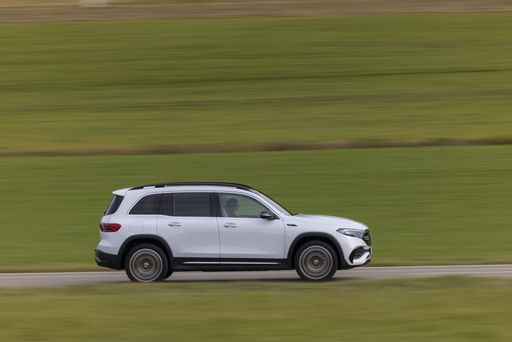 @ group-media.mercedes-benz.com
@ group-media.mercedes-benz.com
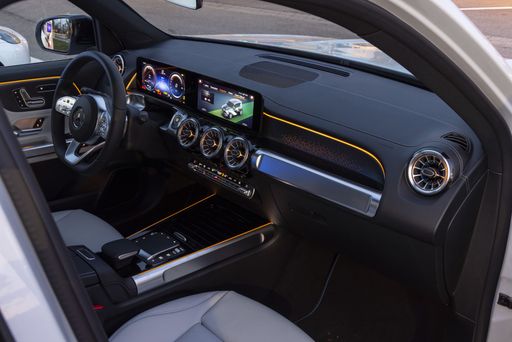 @ group-media.mercedes-benz.com
@ group-media.mercedes-benz.com
 @ group-media.mercedes-benz.com
@ group-media.mercedes-benz.com
Tesla Model 3
The Tesla Model 3 stands out in the electric vehicle market with its sleek design and impressive performance capabilities. It offers a seamless driving experience that combines advanced technology with minimalistic interiors, creating a futuristic feel on the road. Additionally, its range and charging infrastructure make it a practical choice for both city commuting and longer journeys.
details @ tesla.com
@ tesla.com
 @ tesla.com
@ tesla.com
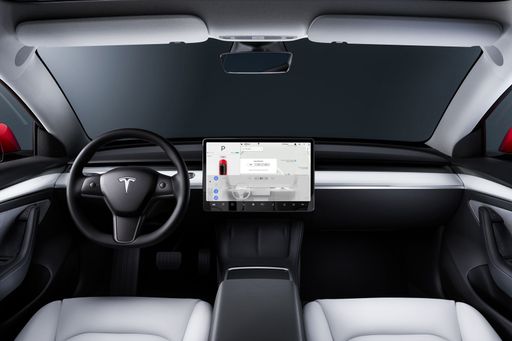 @ tesla.com
@ tesla.com
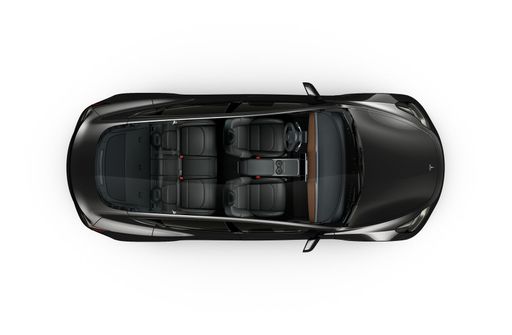 @ tesla.com
@ tesla.com

|

|
|
|
|
Costs and Consumption |
|
|---|---|
|
Price
45900 - 58900 £
|
Price
34300 - 50100 £
|
|
Consumption L/100km
-
|
Consumption L/100km
-
|
|
Consumption kWh/100km
15.2 - 17.2 kWh
|
Consumption kWh/100km
13.2 - 16.7 kWh
|
|
Electric Range
468 - 535 km
|
Electric Range
513 - 702 km
|
|
Battery Capacity
70.50 kWh
|
Battery Capacity
64.5 - 79 kWh
|
|
co2
0 g/km
|
co2
0 g/km
|
|
Fuel tank capacity
-
|
Fuel tank capacity
-
|
Dimensions and Body |
|
|---|---|
|
Body Type
SUV
|
Body Type
Sedan, Hatchback
|
|
Seats
5
|
Seats
5
|
|
Doors
5
|
Doors
4 - 5
|
|
Curb weight
2105 - 2170 kg
|
Curb weight
1822 - 1929 kg
|
|
Trunk capacity
495 L
|
Trunk capacity
594 L
|
|
Length
4684 mm
|
Length
4720 - 4724 mm
|
|
Width
1834 mm
|
Width
1850 mm
|
|
Height
1654 - 1689 mm
|
Height
1431 - 1440 mm
|
|
Max trunk capacity
1710 L
|
Max trunk capacity
-
|
|
Payload
435 kg
|
Payload
303 - 333 kg
|
Engine and Performance |
|
|---|---|
|
Engine Type
Electric
|
Engine Type
Electric
|
|
Transmission
Automatic
|
Transmission
Automatic
|
|
Transmission Detail
Reduction Gearbox
|
Transmission Detail
Reduction Gearbox
|
|
Drive Type
Front-Wheel Drive, All-Wheel Drive
|
Drive Type
Rear-Wheel Drive, All-Wheel Drive
|
|
Power HP
190 - 292 HP
|
Power HP
283 - 460 HP
|
|
Acceleration 0-100km/h
6.2 - 8.9 s
|
Acceleration 0-100km/h
3.1 - 6.1 s
|
|
Max Speed
160 km/h
|
Max Speed
201 - 262 km/h
|
|
Torque
385 - 520 Nm
|
Torque
420 - 660 Nm
|
|
Number of Cylinders
-
|
Number of Cylinders
-
|
|
Power kW
140 - 215 kW
|
Power kW
208 - 338 kW
|
|
Engine capacity
-
|
Engine capacity
-
|
General |
|
|---|---|
|
Model Year
2024 - 2025
|
Model Year
2023 - 2024
|
|
CO2 Efficiency Class
A
|
CO2 Efficiency Class
A
|
|
Brand
Mercedes-Benz
|
Brand
Tesla
|
What drive types are available for the Mercedes EQB?
The Mercedes EQB is available as Front-Wheel Drive or All-Wheel Drive.
The prices and data displayed are estimates based on German list prices and may vary by country. This information is not legally binding.
